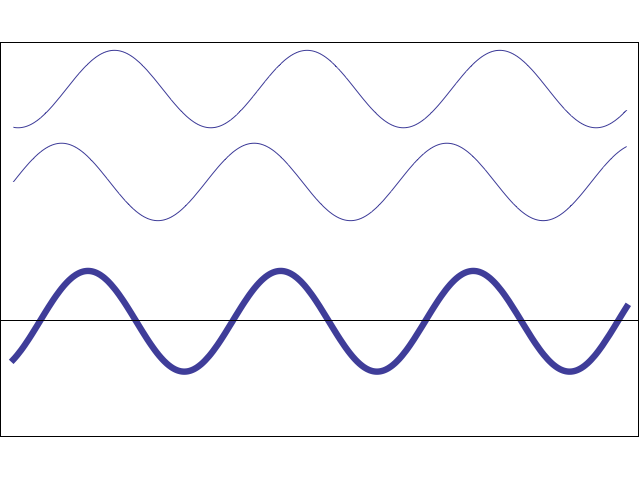
Superposition Waves

When waves pass through each other, their displacements add together to make the displacement of the resultant wave.

If two waves are in phase, they undergo completely constructive interference.

If two waves are exactly out of phase, they undergo completely destructive interference.
These two waves have the same wavelength. As one wave travels past the other, the superposition of the waves becomes completely constructive when they are in phase, and completely destructive when they are out of phase.

http://webphysics.davidson.edu/applets/superposition/intro.html

Red has 1.25 cycles, green is about 1.75 cycles, yellow is about 1.5 cycles

This Physlet illustrates the effects of adding waves, allowing you to insert the mathematical waves functions to be plotted.

© 2013 Pearson Education, Inc
Two pulses on a string approach each other at speeds of 1 m/s. What is the shape of the string at t = 6 seconds?
Standing waves

© 2013 Pearson Education, Inc
Standing waves are produced when two waves of identical frequency, traveling in opposite directions, interfere with each other.
Fixed points that undergo zero net displacement are called nodes.
Halfway between the nodes, points that undergo maximum oscillation are called antinodes.

Animation courtesy of Dr. Dan Russell, Grad. Prog. Acoustics, Penn State